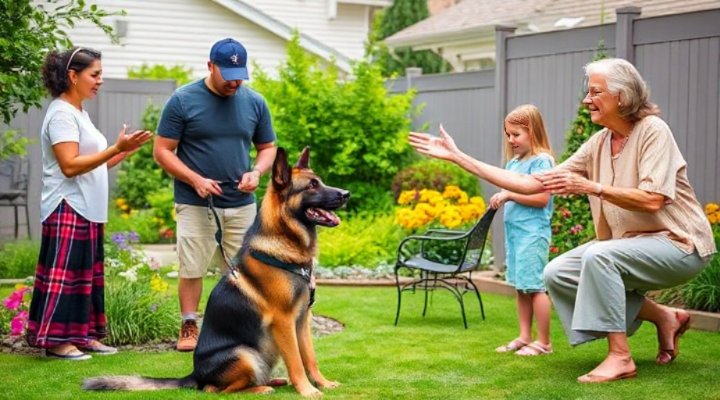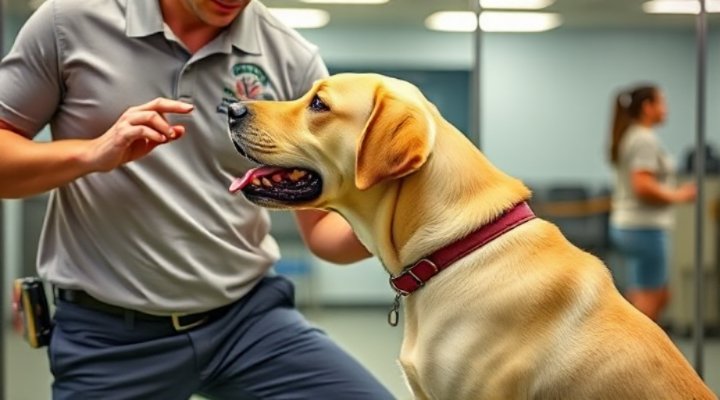Dog training commands form the foundation of canine communication, creating a common language between you and your four-legged friend. According to the American Veterinary Medical Association, consistent command training reduces behavioral issues by up to 80%. Let’s explore this essential skill from the ground up.

The Essential Basic Dog Training Commands
Every dog should master these five fundamental commands for safety and good manners. Interestingly, our article on training a puppy to sit remains one of our most popular resources.
1. Sit Command
The cornerstone of obedience training. Hold a treat near your dog’s nose, then slowly lift it upward. As their head follows the treat, their bottom will naturally lower. Say “sit” the moment they’re in position, then reward immediately.
2. Stay Command
Begin with your dog in sit position. Open your palm in front of you and say “stay.” Take a few steps back. If they remain, reward them. Gradually increase distance and duration.

Intermediate Commands for Better Control
Once basics are mastered, these commands provide greater control in various situations. For more on behavior management, see our guide on correcting unwanted dog behavior.
3. Leave It Command
Essential for preventing your dog from picking up dangerous items. Place a treat in your closed hand. When they sniff or lick, say “leave it.” Reward only when they stop trying and look at you.
4. Drop It Command
Teach this by offering a toy, then showing a treat while saying “drop it.” When they release the toy, reward with the treat and return the toy. This builds trust that giving up items brings rewards.

Advanced Dog Training Commands for Specialized Situations
These sophisticated commands require patience but offer impressive results. The American Kennel Club recommends these for dogs competing in obedience trials.
5. Emergency Recall
Use a unique word (like “cookie!”) only for emergencies. Practice by saying the word enthusiastically while running away from your dog, rewarding lavishly when they follow.
6. Place Command
Teaches your dog to go to a specific spot (like a mat) and stay there until released. Incredibly useful when guests arrive or during meal times.

Troubleshooting Common Command Training Challenges
Even with perfect technique, you might encounter these common issues. Our positive reinforcement techniques article offers additional solutions.
Inconsistent Response
Dogs generalize poorly – they may “sit” perfectly in your kitchen but forget in the park. Practice each command in at least five different locations before considering it mastered.
Slow Response Time
Build speed by using higher-value treats and delivering them faster. Gradually increase criteria – only reward the fastest responses.

Tailoring Commands to Your Dog’s Personality
Just like people, dogs have unique learning styles. High-energy breeds might respond better to enthusiastic delivery, while sensitive dogs need softer tones.
For Anxious Dogs
Keep sessions short (3-5 minutes) and always end on success. Pair commands with gentle petting rather than food if your dog finds treats stressful.
For Stubborn Breeds
Make training a game. Hide treats around your training area and let your dog “find” them after performing commands correctly.
Remember, mastering dog training commands isn’t about perfection – it’s about building understanding. Whether you’re teaching basic manners or advanced skills, the real reward is the strengthened bond between you and your canine companion.
Related Keywords: dog obedience training, teaching dogs commands, canine communication skills, puppy command training, advanced dog tricks, professional dog training techniques

